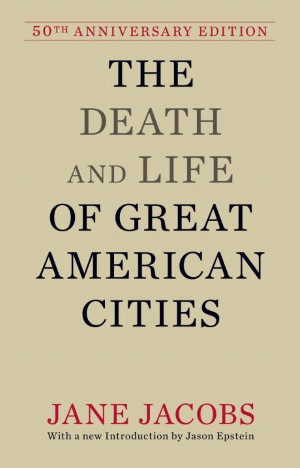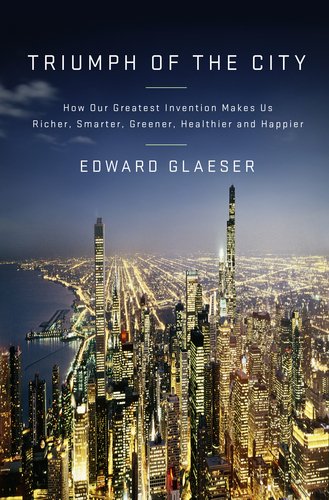Anyone who has read my previous blog posts might know I tend to be a little more academic. So, let’s talk about living in downtown Detroit on a macro scale for a moment rather than a micro scale.. What does it actually mean to live in high- density urbanism? How can we affect massive change in the world simply by choosing to live in high density, transit rich, walkable urban communities? For this perspective, I have been reading the landmark recent book by Harvard economist Edward Glaeser: “Triumph of the City : How our Greatest Invention Makes us Richer, Greener, Healthier, and Happier”
We are living in the age of cities. More than half the world’s population lives in cities, and it is growing rapidly every year. Whether that human condition, the settlement pattern of urbanization, is on balance more positive than negative will depend on many factors. It is my duty as an urban planner to piece these factors together in a way that results in a stronger society, environment and economy. It can’t be done in a vacuum, and as planners we have to bring along a public that is so often resistant to change because the public does not have “perfect information.” My job as a planner is to give them that information and educate them as to what it means for all of us as a society, to help them make reasoned decisions.
To be clear, Detroit is the perfect experimentation space for figuring out what that optimal new 21st century urbanization should be or could be. There are two major moments where innovation happens – desperation, or abundance. Detroit was the core of industrial and technological innovation during a long age of abundance, but has since become known for being at the core of desperation. This gives Detroit the tremendous opportunity it has today to be a model for, and producer of, this new 21st century global urbanism that has to be more socially/globally connected, environmentally respectful, cost conscious, and resilient in a world that is resource scarce, and rapidly changing. How does Detroit take advantage of this opportunity and become a place of innovation again?
In the first chapter of Triumph of The City, Detroit is mentioned several times. Two themes emerge; 1) that formula for entrepreneurial spirit was here, but was strangled, and 2) the wide physical distance between the entrepreneurs is one of our most intractable but critical problems we need to solve right away.
I am going to focus on the second one. (We already understand the first theme since it happens frequently in single industry towns where a few large players are enormously successful, slowly dissolving entrepreneurialism over generations and replacing it with a dependency on the expectations of never ending success of the dominant players in the dominant industry.)
Wide Physical Distance: What do some famously entrepreneurial cities that have resulted in strong economies have in common? The physical spaces, the built environment that connect people is the framework within which innovation and entrepreneurial spirit is fostered. The chance casual interactions and crosspollination of ideas is what drives great cities. The Detroit metro area as a whole still has the great educated masses of people, but most of this portion of society is not living in the physical setting that feeds and pollinates innovation. Urbanism at its finest moments is that physical condition which actually translates into a social condition, this is at the heart of why cities have triumphed. City form, urban design, also known as the built environment, is itself an extremely powerful agent, vastly underestimated in its influence on macro and micro level social and economic problems such as this.
Urbanism (as opposed to suburbanism or a rural or hunting/gathering existence), has for thousands of years allowed for the exchange of ideas, through density, that resulted in most significant scientific, political, artistic innovations and revolutions in every major civilization across the world. Here in the U.S., and certainly in the Detroit metro area, we are living in an age of physical isolation we can’t afford for two reasons:

- The first reason is because of the cost of supporting low-density infrastructure on a reduced tax base.
- The second reason is the socially rich success of cities triumphs over the isolation of suburbs. This concept forms the basis of Jane Jacobs’ landmark 1960’s urban planning text, “Death and Life of Great American Cities,” which outlines those natural patterns of interaction inherent to urbanism that we so often take for granted. Urban design and planning is in many ways the art of fostering social interaction, and in Triumph of the City, Edward Glaeser implies that since Economists know what patterns of interaction create 21st century economies of entrepreneurialism, and Planners have known for years what urban forms create those patterns of interaction, we now have to create that physical environment where it does not exist. This is my purpose.
I am not alone in my assertion that this is the number one most critical macro-level issue facing Detroit right now. I think everyone realizes that to revitalize Detroit we must have a strong core to build from. Andrew Basile, a Detroit area businessman wrote a notable 2011 letter on the primary spatial assets that attract and retain the best human capital, and how that relates to the future of Detroit. Detroit is headed in the right direction, and it will see a socially lush spatial environment come to fruition with investments like the M-1 Streetcar, and in a uniquely Detroit way by fully embracing and implementing the Detroit Future City Plan. I have already seen that core living environment beginning to gel in the downtown-midtown-Corktown area, and as a resident, I have played a part in creating it. The spatial transformation of Detroit is just beginning, now is the time to be part of shaping a new type of living environment worthy of our long held reputation as a city of doers. What is happening in Detroit today is the triumph of the city.
__________
up next – Play: Exploration Launched from Detroit

